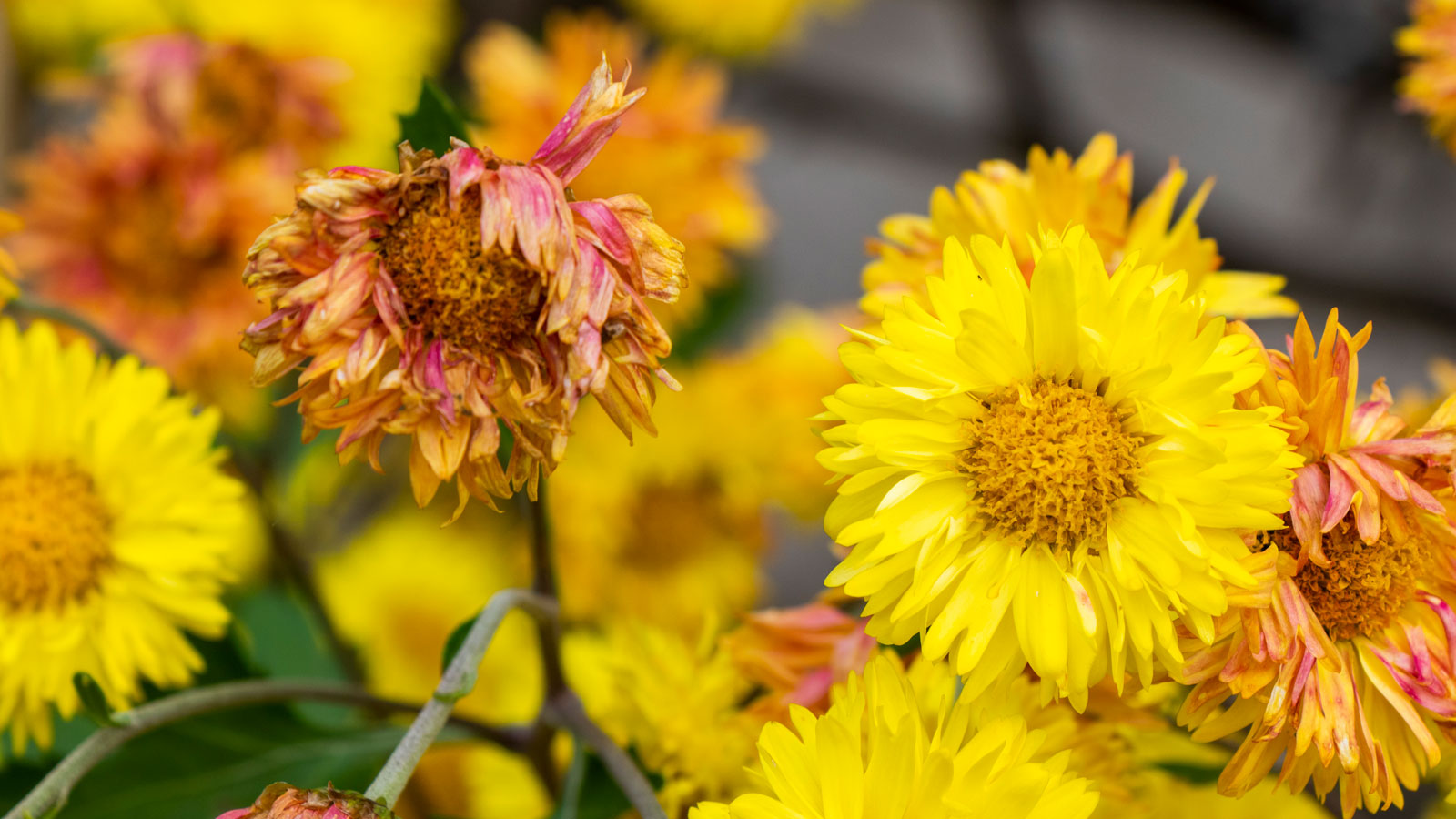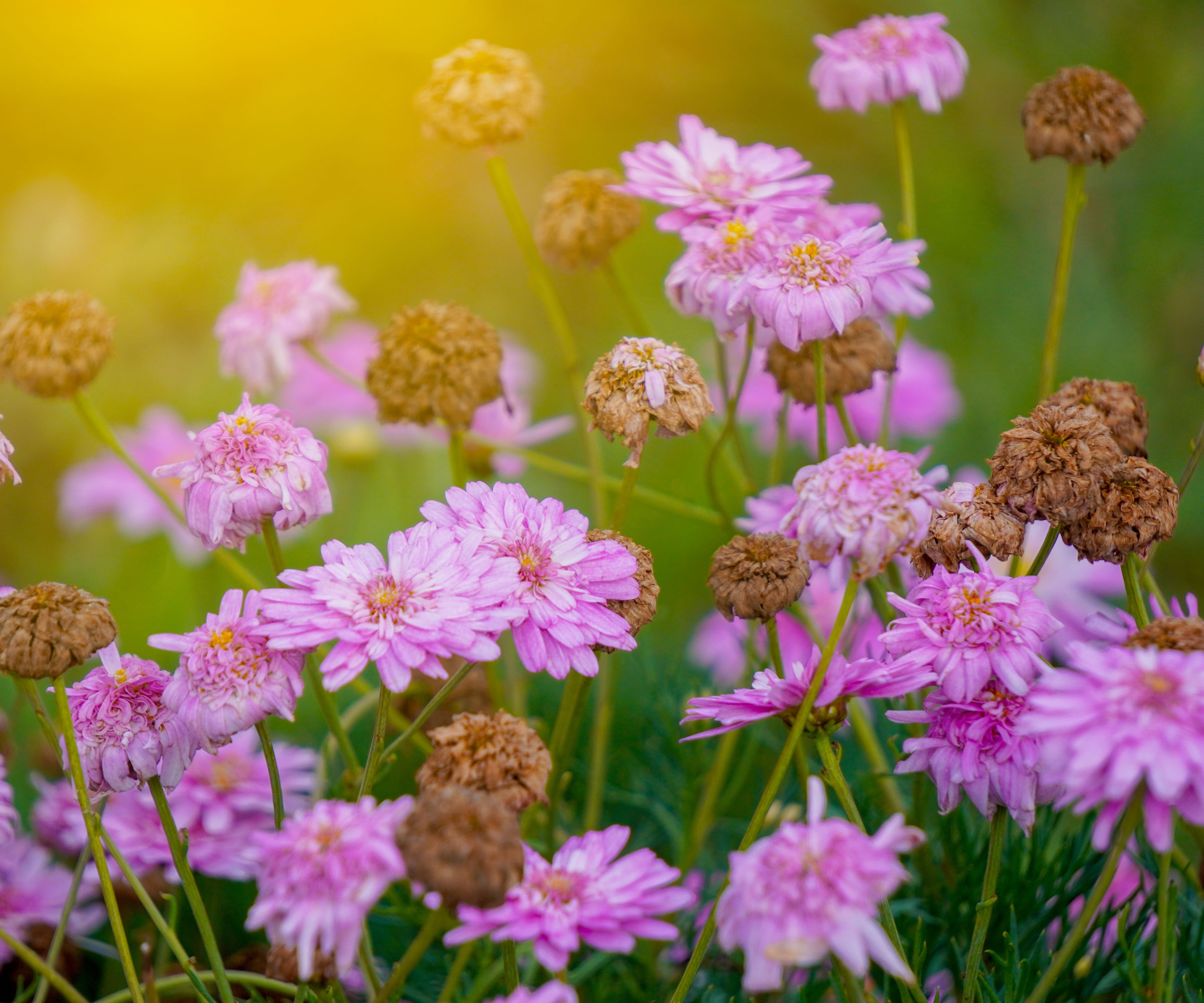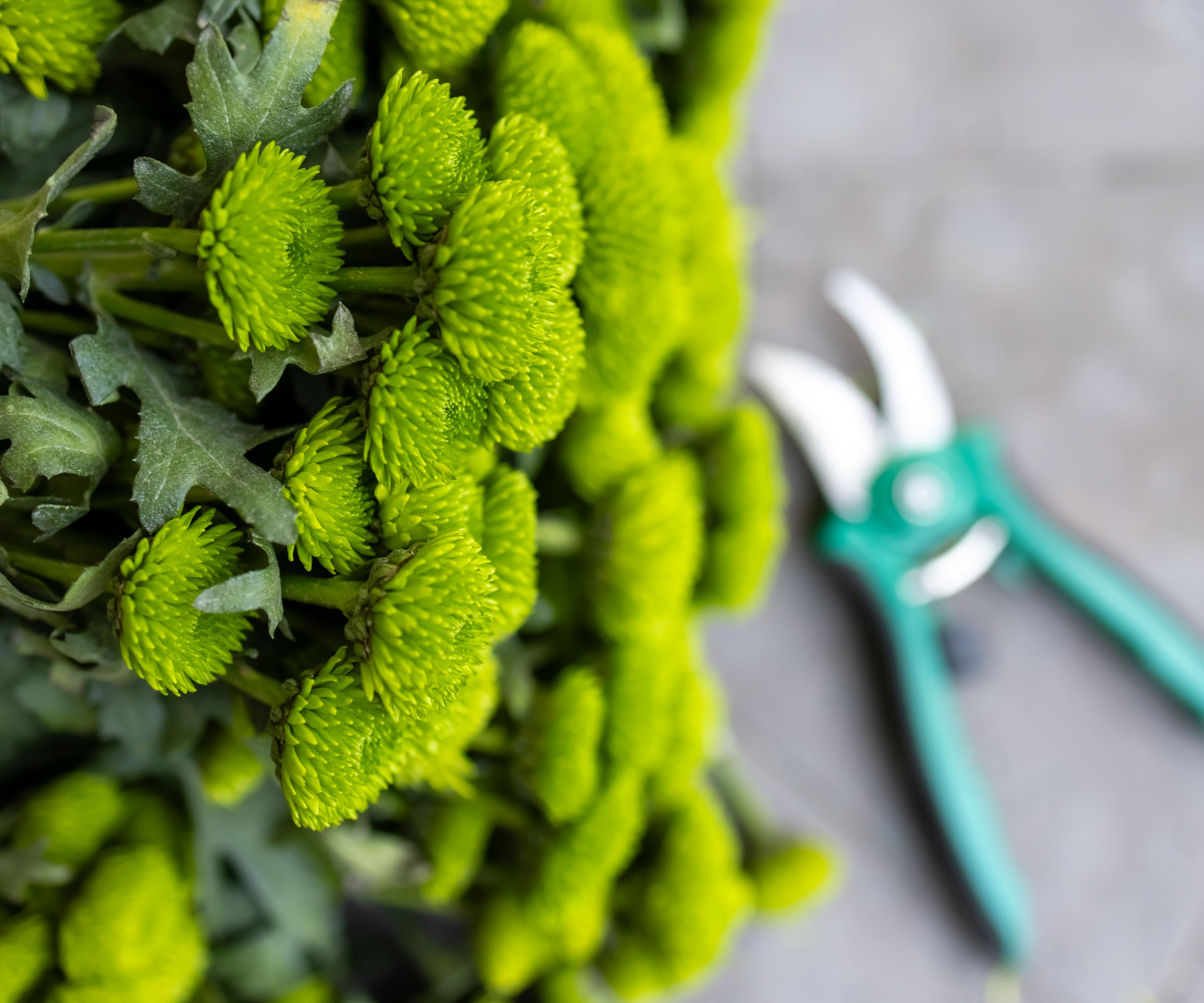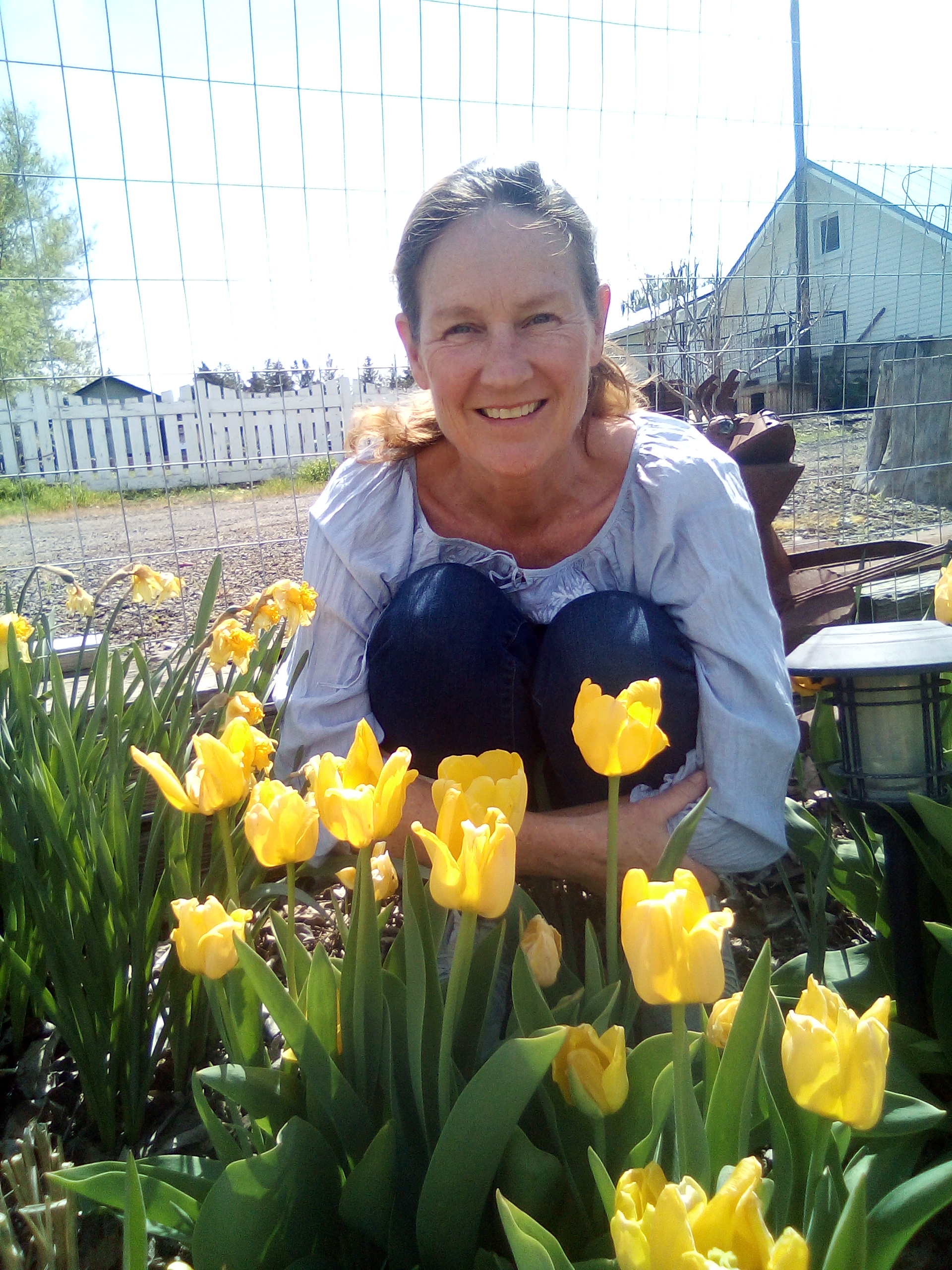How To Deadhead Mums To Keep Chrysanths Blooming At Their Best All Through Fall
These flowering stalwarts have the potential to take you right through fall – but this one thing can guarantee the longest blooming displays. Here's how to deadhead mums


Chrysanthemums have a special place at the far end of summer. When other flowering ornamentals are starting to slow down and run out of steam, chrysanths are hitting their stride as the days start to shorten and the temperatures start to cool. Depending on variety and region, knowing how to deadhead mums can guarantee you masses of hearty blooms from late summer all the way to the first frost.
Removing dead and faded flowers is a great way to keep your homegrown mums at their best as other ornamentals start to fade. Using pruners or kitchen shears, this is a fun and relaxing job to do every week or so once blooms appear. And when you deadhead mums, you are doing more than just cleaning up the plant and making it look pretty again. You are improving the plant's health while fooling it into making more flowers. Here’s how to keep your mums happy for longer.
Why do you Deadhead Chrysanthemums?
It’s common to find chrysanthemums bursting into flower around the end of the summer. Mums bloom when the nights get longer and the temperature begins to cool. As perennials, many mum varieties have the potential to flower until the first frost, when they die back for winter, only to bounce back the following year as the night hours lengthen and the soil warms. So it’s important to do everything you can to extend that flowering display for as long as you can.
The reason for deadheading the flowers is simple – it persuades the plant to make more flowers, so mums bloom for longer. Plants produce flowers in the first place to set seed. When you remove the flower before it has time to develop those viable seeds, the plant goes into overdrive producing more buds to create that seed and therefore propagate itself. So by taking off those first fading flowers, you are tricking the plant into making more flowers for you to enjoy.
When To Deadhead Mums
The process of deadheading mums essentially begins as soon as your plants start blooming. Some mum varieties do start blooming in August, but for most mum growers you need to start deadheading from mid-month. You should actively begin deadheading once the individual flower heads start to fade – don’t wait for them to turn crispy and wither on the stalk. Catching them early and removing them as quickly as possible keeps the energy going into flower production without missing a beat. You may need to make this a weekly process during the growing season.
When you deadhead these flowers in August in a frequent and timely way, you make sure the plant doesn’t waste energy keeping old, spent flowers alive. You are basically instructing the plant to send energy to bud nodes and develop new flowers. So by deadheading you create several blooming phases. This is true for both ground-based and container-based mums. In the case of annual mums like ‘Creeping Daisy,’ removing spent flowers prevents them setting seed and self sowing.

Which Tools You Use for Deadheading
To deadhead mums during the blooming season, you have a few options. When the flower is very far gone, you can actually pull it off – but this leaves an ugly, brown stem that ruins the green and floral effect. What is best is something that makes a clean, neat cut. Small snips, pruners or scissors are best. Make sure your tool is sharp to avoid injury to the plant. Additionally, wipe the blade with alcohol or a bleach solution to remove pathogens. This will prevent the spread of disease.
If it is early in the season and the plant is filling up with fading flowers, you can shear it. However, you should only remove the upper layer of growth. There are bound to be buds hidden in the lower stems that can now get better light. The process lacks finesse, but it’s easier on large plants than removing flowers one at a time. Utility shears are great for mass deadheading – try Scotts 8in Garden Utility Shears from Amazon to make light work of repeated cuts. If you want pruners for more precise, targeted cuts, try ClassicCut Forged Steel Bypass Hand Pruners by Corona, also at Amazon.

How To Deadhead Mums
Look at the flower stem and determine the next growth point. This shows you where to cut. If you just cut at the base of the flower, the flowering stem will still turn brown and look unsightly. Deadheading mums is a bit painstaking, so it's a good idea to take off even the flowers that are just beginning to go as well as all the brown ones. This will prevent making it a daily chore. If you have an entire cluster of dead flowers, you can still follow the stem to the next growth and remove the whole cluster there.
If you look at a chrysanthemum stem, you will notice the main stems branch out. Each one sends out tinier branches. On the terminal ends is where the buds form. In the case of a mature mum, some of these buds will be in the interior of the bulk of the plant because the stems are short. When you deadhead you can go to each dead flower and trace the stem with your finger down to where it branched. This is where you will make your cut. Doing it in this way keeps the plant from having brown stems sticking out of it. It also stimulates the growth node to send out new growth over the course of the lifespan of the chrysanthemum.
Sign up for the Gardening Know How newsletter today and receive a free copy of our e-book "How to Grow Delicious Tomatoes".

Aftercare for Your Mums
After deadheading, maintain general care for mums with regular watering, especially on hot, dry days. Once your mums are in full bloom, it’s good to maintain a regular feeding routine. Fertilize your mums every couple of weeks, ideally one with a high potassium element to support and nourish further flowering. Make sure your feed does not have a high nitrogen level during the blooming season, as this will hinder blooming and focus the plant on excessive leaf development.
As a good option for late summer and early fall, try a fertilizer with a high potash (potassium) level. It’s a good idea to keep feeding mums until they are nearing the end of the flowering season. Use Mum Fertilizer from TPS Nutrients, available from Amazon, for a higher potassium level to help with flower formation and bloom size. Alternatively, try FoxFarm Blossom Builder, also from Amazon. Failing that, a good tomato feed or high potash formula supports continued flowering.

Bonnie Grant is a professional landscaper with a Certification in Urban Gardening. She has been gardening and writing for 15 years. A former professional chef, she has a passion for edible landscaping.
